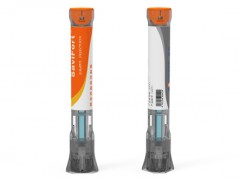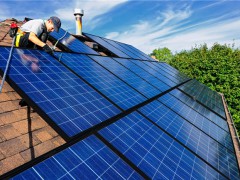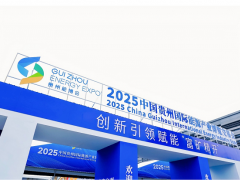據(jù)伍德麥肯茲1月20日?qǐng)?bào)道,盡管聽(tīng)起來(lái)像是破紀(jì)錄,但亞洲天然氣需求的前景極為樂(lè)觀。盡管有持續(xù)的疫情限制、天價(jià)現(xiàn)貨和來(lái)自可再生能源的競(jìng)爭(zhēng)加劇,該地區(qū)天然氣消費(fèi)在未來(lái)十年將以每年近3%的速度增長(zhǎng)。在我們?cè)O(shè)定的基本方案中,峰值需求要到2050年以后才會(huì)出現(xiàn),而在加速能源轉(zhuǎn)型方案2(AET-2)中,到2040年,脫碳幾乎不會(huì)影響亞洲天然氣需求。
現(xiàn)在,亞洲這個(gè)最大天然氣市場(chǎng)的挑戰(zhàn)是滿足需求。區(qū)域天然氣產(chǎn)量近期肯定會(huì)長(zhǎng)期下降,這使得進(jìn)口依賴性的上升不可避免,這對(duì)未來(lái)亞洲液化天然氣需求來(lái)說(shuō)是經(jīng)得起考驗(yàn)的,預(yù)計(jì)未來(lái)十年進(jìn)口將以每年3.7%的速度增長(zhǎng)。今天,中國(guó)正在推動(dòng)需求增長(zhǎng),展望未來(lái),東南亞和南亞將成為世界上增長(zhǎng)最快的液化天然氣市場(chǎng)。
隨著亞洲需求攀升,新的長(zhǎng)期LNG合同在2021年回升到五年來(lái)的最高水平,亞洲買(mǎi)家占全球合同的85%。這些新簽約的供應(yīng)大部分將來(lái)自卡塔爾和美國(guó),以填補(bǔ)亞洲天然氣需求和該地區(qū)大部分地區(qū)本土供應(yīng)下降之間快速增長(zhǎng)的差距。
以前認(rèn)為亞太地區(qū)未開(kāi)發(fā)和尚未發(fā)現(xiàn)的天然氣資源將填補(bǔ)該地區(qū)大部分新出現(xiàn)的供需缺口的假設(shè),已經(jīng)被疲軟的E&A活動(dòng)和低商業(yè)轉(zhuǎn)化率打亂。Angus Rodger在最近關(guān)于亞洲迫在眉睫的天然氣供應(yīng)危機(jī)的報(bào)告中,看到了一個(gè)不利情況,即亞洲上游項(xiàng)目長(zhǎng)期投資不足,到2040年可能需要高達(dá)240百萬(wàn)噸/年的額外液化天然氣,這幾乎是基礎(chǔ)案例2.75億噸/年供應(yīng)需求差距的兩倍。
隨著LNG價(jià)格達(dá)到創(chuàng)紀(jì)錄的水平,亞洲的買(mǎi)家渴望獲得新的合同以滿足激增的需求,為什么該地區(qū)的LNG回填項(xiàng)目沒(méi)有成為投資的首選?
對(duì)于亞太地區(qū)的LNG回填機(jī)會(huì),時(shí)間至關(guān)重要
由于整個(gè)亞太地區(qū)有幾個(gè)未開(kāi)發(fā)的LNG回填機(jī)會(huì)尚未開(kāi)發(fā),機(jī)會(huì)之窗有關(guān)閉的風(fēng)險(xiǎn)。伍德賽德和桑托斯去年在Scarborough/Pluto T2擴(kuò)建項(xiàng)目和巴羅薩天然氣項(xiàng)目的FID中展示了可以做什么,來(lái)回填達(dá)爾文LNG項(xiàng)目。但是,對(duì)于該地區(qū)兩個(gè)最古老和最大的液化天然氣項(xiàng)目,即澳大利亞的西北大陸架(NWS)和印度尼西亞的Bontang,每年多達(dá)1500萬(wàn)噸的潛在回填供應(yīng)的進(jìn)展仍然緩慢得令人痛苦。這兩個(gè)項(xiàng)目的回填方案成本都不低,對(duì)這兩個(gè)項(xiàng)目來(lái)說(shuō),重大決定迫在眉睫,即優(yōu)先考慮回填開(kāi)發(fā)還是開(kāi)始關(guān)閉生產(chǎn)線。
正如亞太天然氣和液化天然氣團(tuán)隊(duì)同事Daniel Toleman所說(shuō),“在液化天然氣價(jià)格創(chuàng)新高和區(qū)域天然氣需求強(qiáng)勁的背景下,時(shí)間是至關(guān)重要的”。
西北大陸架和Bontang項(xiàng)目為保持滿載而戰(zhàn)
西北大陸架需要新的供應(yīng)來(lái)保持其五條生產(chǎn)線的滿載,迄今為止簽署的第三方交易只是一種權(quán)宜之計(jì)。但是,雖然 “最好的情況 ”是通過(guò)回填來(lái)支持每年約1000萬(wàn)噸的產(chǎn)出,但所有選擇都會(huì)帶來(lái)各自挑戰(zhàn)。鑒于高成本、環(huán)境問(wèn)題和合資企業(yè)的錯(cuò)位,Browse這個(gè)領(lǐng)先的回填競(jìng)爭(zhēng)者看起來(lái)不太可能在這十年里被開(kāi)發(fā)。由于二氧化碳含量高達(dá)12%,碳捕獲和儲(chǔ)存將是必要的,這給已經(jīng)很困難的項(xiàng)目增加了復(fù)雜性和成本。
在其他選擇中,Clio-Acme油田更有可能被優(yōu)先用于回填雪佛龍的Wheatstone項(xiàng)目,因?yàn)樵摴緵Q定出售其N(xiāo)WS股份,轉(zhuǎn)而專(zhuān)注于這個(gè)早期的核心運(yùn)營(yíng)項(xiàng)目。最近伍德賽德的Wheatstone供應(yīng)油田的儲(chǔ)量減少,也可能有助于推動(dòng)Clio-Acme發(fā)展。
印度尼西亞傳統(tǒng)的Bontang項(xiàng)目繼續(xù)面臨著現(xiàn)有供應(yīng)的重大不確定性。由于埃尼Merakes和PERTAMINA的Offshore Mahakam、東加里曼丹(Attaka)和Sanga Sanga PSC的問(wèn)題,客戶已經(jīng)被要求在今年推遲或取消貨運(yùn)。
為了補(bǔ)救這一點(diǎn),2021財(cái)政激勵(lì)措施,如Offshore Mahakam,加上價(jià)格飛漲,應(yīng)該幫助PtTAMAMA增加回填鉆井。為了應(yīng)對(duì)Mahakam嚴(yán)重衰退,預(yù)計(jì)PERTAMINA將在2022年提供入住機(jī)會(huì)。
在其他地方,Merakes的持續(xù)生產(chǎn)問(wèn)題可能會(huì)威脅到埃尼公司在2023年之前提高對(duì)Bontang供應(yīng)的計(jì)劃。如果挑戰(zhàn)持續(xù)存在,埃尼將不得不在Jangkrik的填充鉆井中做出選擇,以阻止下降,或者提前進(jìn)行未來(lái)的合作。
雪佛龍出售其印尼深水開(kāi)發(fā)項(xiàng)目(IDD)的結(jié)果必須盡快出來(lái)。自2019年以來(lái),在市場(chǎng)上,實(shí)際需要在今年達(dá)成交易,以便IDD的天然氣在本世紀(jì)末之前取代邦當(dāng)?shù)漠a(chǎn)量下降。還有很多事情要做,包括就價(jià)格達(dá)成協(xié)議,政府批準(zhǔn)延長(zhǎng)PSC和授權(quán)新的開(kāi)發(fā)計(jì)劃。
在其他地方,2022年的一個(gè)關(guān)鍵點(diǎn)是巴布亞新幾內(nèi)亞政府同意與埃克森美孚領(lǐng)導(dǎo)的P'nyang天然氣合資企業(yè)達(dá)成協(xié)議,將該項(xiàng)目重新納入管道,使巴布亞新幾內(nèi)亞液化天然氣3號(hào)生產(chǎn)線再次被提上日程。
政府的支持仍然至關(guān)重要
毫無(wú)疑問(wèn),運(yùn)營(yíng)商和合作伙伴都希望推進(jìn)回填項(xiàng)目,并在亞洲液化天然氣需求中套現(xiàn),當(dāng)競(jìng)爭(zhēng)項(xiàng)目簽署有價(jià)值的長(zhǎng)期合同時(shí),袖手旁觀并不有趣。但是,除非政府采取更多措施來(lái)激勵(lì)回填機(jī)會(huì),包括審查當(dāng)前的上游激勵(lì)措施和財(cái)政目標(biāo)(印度尼西亞和巴布亞新幾內(nèi)亞)以及碳捕獲(澳大利亞),否則開(kāi)發(fā)商有可能錯(cuò)過(guò)機(jī)會(huì)。
由于上游企業(yè)將迎來(lái)盈利能力增強(qiáng)的時(shí)期,政府改善條件或提供額外支持的任何努力都可能在政治上出現(xiàn)波動(dòng)。但從目前的情況來(lái)看,除非當(dāng)?shù)卣Φ貭?zhēng)奪未來(lái)的投資資金,否則亞太地區(qū)的液化天然氣回填有可能輸給卡塔爾、俄羅斯和美國(guó)等競(jìng)爭(zhēng)對(duì)手。
在經(jīng)濟(jì)增長(zhǎng)、支持天然氣的政策和去碳化的推動(dòng)下,亞洲的天然氣需求增長(zhǎng)看起來(lái)是有前途的。該地區(qū)開(kāi)發(fā)自己的天然氣資源以幫助滿足這一需求的能力卻不那么確定。對(duì)進(jìn)口的依賴性上升是不可避免的,目前對(duì)新的長(zhǎng)期液化天然氣合同的渴望證實(shí)了這一點(diǎn)。
隨著LNG價(jià)格達(dá)到創(chuàng)紀(jì)錄的水平,亞洲買(mǎi)家渴望新的合同來(lái)滿足激增的需求,為什么該地區(qū)的LNG回填項(xiàng)目沒(méi)有成為投資的首選呢?
王佳晶 摘譯自 伍德麥肯茲
原文如下:
The future of Asian LNG supply – backfill or bust
At the risk of sounding like a broken record, the outlook for Asian gas demand is overwhelmingly positive. Despite ongoing pandemic restrictions, sky-high spot prices and rising competition from renewables, the region’s gas consumption will grow at almost 3% a year over the next decade. Peak demand doesn’t feature in our base case until beyond 2050, while in our 2-degree Accelerated Energy Transition scenario (AET-2), more rapid decarbonisation barely impacts Asian gas demand by 2040.
Asia’s biggest gas market challenge is now meeting demand. The near-certain long-term decline in regional gas production makes rising import dependency inevitable, future-proofing future Asian LNG demand: we expect imports to grow at a heady 3.7% a year over the next decade. Today, China is driving demand growth, while looking further forward, Southeast Asia and South Asia become the fastest growing LNG markets in the world.
As Asian demand has climbed, new long-term LNG contracting rebounded to its highest level in five years in 2021, with Asian buyers accounting for 85% of global contracting. Much of this newly contracted supply will come from Qatar and the US, plugging the fast-growing gap between Asian gas demand and declining indigenous supply across much of the region.
Any previous assumptions that Asia Pacific’s undeveloped and yet-to-find gas resources will fill much of the region’s emerging supply-demand gap have been poleaxed by weak E&A activity and low commercial conversion rates. In his recent Insight on Asia’s looming gas supply crisis, my colleague Angus Rodger sees a downside scenario where chronic underinvestment across Asian upstream projects could require up to a whopping 240 mmtpa of additional LNG by 2040 – almost double our base case supply-demand gap of 275 mmtpa by this time.
With LNG prices at record levels and Asia’s buyers hungry for new contracts to meet surging demand, why aren’t the region’s LNG backfill projects first in line for investment?
For Asia Pacific’s LNG backfill opportunities, time is of essence
With several undeveloped LNG backfill opportunities across Asia Pacific yet to be developed, the window of opportunity risks closing. Woodside and Santos showed what can be done with last year’s FIDs on the Scarborough/Pluto T2 expansion and the Barossa gas project to backfill Darwin LNG. But for two of the region’s oldest and largest LNG projects, the North West Shelf (NWS) in Australia and Bontang in Indonesia, progress on up to 15 mmtpa of potential backfill supply remains painfully slow. Backfill options at both projects are not low cost and for both major decisions loom: prioritise backfill developments or start shutting in trains.
As my colleague Daniel Toleman in our APAC Gas & LNG team repeatedly tells me, “Against a backdrop of record-high LNG prices and strong regional gas demand, time is of the essence.”
North West Shelf and Bontang – fighting to stay full
The NWS needs new supply to keep its five trains full, with third-party deals signed to date only a stopgap. But while a ‘best case’ outcome could see around 10 mmtpa of output being supported through backfills, all options present their own challenges. Browse, a leading backfill contender, looks unlikely to be developed this decade given high costs, environmental concerns and misalignment in the joint venture. And with CO2 levels up to 12%, carbon capture and storage will be a necessity, adding complexity and cost to an already tough project.
Among other options, the Clio-Acme fields are more likely to be prioritised to backfill Chevron’s Wheatstone project, given the company’s decision to sell its NWS stake and focus instead on this early life, core operated project. Recent reserves reductions at Woodside’s Wheatstone supply fields could also help get Clio-Acme moving.
Indonesia’s legacy Bontang project continues to face major uncertainties around existing supply. With issues at Eni’s Merakes and PERTAMINA’s Offshore Mahakam, East Kalimantan (Attaka) and Sanga Sanga PSCs, customers are already being asked to expect cargo deferrals or cancellations this year.
Looking to remedy this, fiscal incentives granted in 2021 to fields like Offshore Mahakam, together with soaring prices, should help PERTAMINA increase backfill drilling. Fighting a severe decline at Mahakam, we expect PERTAMINA to offer farm-in opportunities in 2022.
Elsewhere, continuing production issues at Merakes could threaten Eni's plans to boost supply to Bontang by 2023. If challenges persist, Eni will have to choose between infill drilling on Jangkrik to arrest decline or bring forward future tie-ins.
An outcome on Chevron’s sale of its Indonesian Deepwater Development (IDD) must come soon. On the market since 2019, a deal is realistically needed this year for IDD’s gas to replace declining output at Bontang before the end of this decade. A lot remains to be done, including agreement on price, government approval on a PSC extension and authorisation of a new development plan. Do not hold your breath.
Elsewhere, a wildcard for 2022 would be the government of Papua New Guinea agreeing to a deal with the ExxonMobil-led P'nyang gas joint venture to bring the project back into the pipeline, putting PNG LNG Train 3 on the table once more.
Government support remains critical
There is little doubt that operators and partners want to push backfill projects forwards and cash in on Asian LNG demand – watching from the sidelines as competing projects sign valuable long-term contracts is not much fun. But developers risk missing out unless governments do more to incentivise backfill opportunities, including reviewing current upstream incentives and fiscal goals (Indonesia and PNG) and carbon capture (Australia).
Because upstream companies are set for a period of increased profitability, any efforts by government to improve terms or provide additional support are likely to be politically volatile. But the way things currently stand, Asia Pacific’s LNG backfills risk losing out to rivals like Qatar, Russia and the US unless local regimes compete harder for future investment dollars.
Driven by economic growth, pro-gas policies and decarbonisation, Asian gas demand growth looks future-proofed. Far less certain is the region’s ability to develop its own gas resources to help meet this demand. Rising import dependency is now inevitable, confirmed by current appetite for new long-term LNG contracting.
With LNG prices at record levels and Asia’s buyers hungry for new contracts to meet surging demand, why aren’t the region’s LNG backfill projects first in line for investment?
免責(zé)聲明:本網(wǎng)轉(zhuǎn)載自其它媒體的文章,目的在于弘揚(yáng)石化精神,傳遞更多石化信息,并不代表本網(wǎng)贊同其觀點(diǎn)和對(duì)其真實(shí)性負(fù)責(zé),在此我們謹(jǐn)向原作者和原媒體致以敬意。如果您認(rèn)為本站文章侵犯了您的版權(quán),請(qǐng)與我們聯(lián)系,我們將第一時(shí)間刪除。







